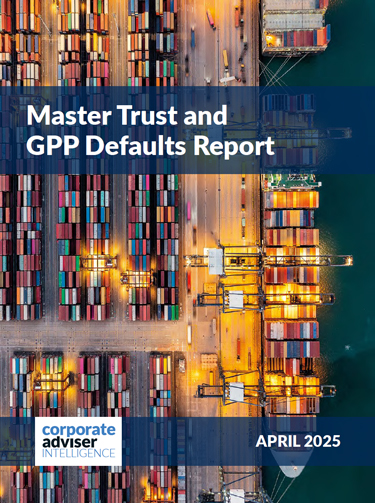According to the AIC, the first split – Dualvest – was launched in 1965 and was based on the “father and son arrangement”. Separate income and capital shares were created which meant the father could get the benefit of the income stream for the rest of his life, while his heir received the long-term capital growth.
The introduction of the 1965 Finance Act meant investors could be hit by marginal tax rates as high as 98 per cent on income, but much lower on their capital gains, making these splits attractive. But zero dividend preference shares (zeros) were not invented until 1987, Brodie-Smith adds. Now the revelation in the latest Budget that the top income tax rate is to rise to 50 per cent in 2010 is seeing investors and advisers start to look at some of the same solutions that were sought to this problem in 1965.
Splits are investment companies that have two or more different classes of share, each with specific rights and entitlements attached, such as to receive income or capital returns. At least one share class is likely to have a fixed wind-up date. Zeros are a class of splits share that pays no income and therefore does not incur an income tax liability, but they do offer the chance for predetermined capital growth. This allows investors to keep their gains within the flat rate capital gains tax (CGT) regime of 18 per cent, where they can also make use of the annual £10,100 CGT allowance.
Jupiter Asset Management head of investment trusts Richard Pavry says zeros offer the benefits of tax efficiency and transparency. However, he adds that investors are still taking an equity risk that is not comparable with that of a gilt or a well- capitalised bank’s deposit account.
AIC figures show that total assets in splits peaked at £14.3 billion at the end of June 2001, or 19 per cent of the total investment company sector. However, at the end of April this year it was worth only 2 per cent, or £2 billion, of the sector. The number of split capital investment companies dropped to 19 from 104 over the same period.
This severe curbing in split investment followed the splits scandal of earlier this decade when the sector’s reputation was tarnished by highly geared, poor quality splits, some of which had crossholdings in other investment trusts. When stockmarkets fell in the dotcom crash, many of these were heavily punished.
Brodie-Smith says: “The split capital investment company sector has had a mixed history, but for those investors prepared to do their homework they can be a useful financial planning tool.”
The AIC also suggests that the current low interest rate environment may also serve to generate further interest in split income shares.
JP Morgan Asset Management head of product development for investment trusts Richard Plaskett also sees potential in the sector.
“Zeros are a pretty attractive instrument from a taxation point of view in a world where CGT rates are lower than income tax rates,” he says.
Previous history aside, the splits sector faces another serious challenge, however, if zeros are to become popular once more. According to the AIC, over half of splits are due to reach the end of their fixed life over the next three years.
Plaskett argues that while much has been reported on the potential demand for zeros under the new income tax regime, less consideration has been given to the appetite issuers may have for actually offering them.
“If you’re an issuer it’s not as obvious a no-brainer,” he says.
The pros for such an issuance include the fact that zeros provide an investment trust with an element of gearing at a time when bank debt can be hard to get.
“The availability of credit to investment trusts has become tighter. It is still there, but it is more expensive,” Plaskett says.
On the flipside, the cost of issuing zeros can be off-putting for issuers. This is because a prospectus has to be produced, which can be a relatively expensive legal and regulatory undertaking. Negotiating bank debt may therefore be considered a cheaper way to gear up.
Secondly, for an issuer to issue a zero it has to be commercially attractive. Currently the yield to redemption on the JP Morgan Income and Capital investment trust is 7.7 per cent. Therefore any new issuers would have to pay a similar amount in order to compete. At a time when the three month sterling LIBOR is below 1.2 per cent, this makes the yield and therefore zeros, look expensive. However, Plaskett says by this time next year the price differential may have been eroded and zeros and bank debt may be more comparable on price.
He also believes that issuers may be waiting to see the success of the latest Ecofin Water and Power zero currently being marketed by Winterflood Securities before launching their own.
Evolve Financial Planning director Jason Witcombe is unsurprised that a revival in zeros may be on the horizon in light of the income tax change, but remains hesitant about them.
“The trouble is, the more complicated we as an industry make products, the more problems we create for ourselves down the line,” he says.
“If we are talking about high-earners who are sophisticated investors and who understand all of the risks, and the adviser is also sufficiently skilled to be able to discuss all of the risk and rewards for the client, then fine.
“But I don’t think anyone will want to return to the days when little old ladies had a portfolio of zeros when they – and probably their adviser – didn’t really know what they were.”
While zeros are not a product Forty Two Wealth Management certified financial planner Alan Dick particularly likes, he says he would not rule them out. However, his investment philosophy is largely passive and he also holds concerns about the added complexity a close ended fund structure adds to client portfolios.
Other advisers, such as Informed Choice joint managing director Martin Bamford, continue to steer clear of split caps, but say they will reassess their value closer to the income tax change.
For those keen to look closer at zeros, Jupiter’s Pavry suggests investors should query whether there is any prior charge ranking ahead of the zeros entitlement (such as bank debt). Other factors to consider include the ratio of total assets to the final entitlement of the zeros on their eventual repayment date and the historic volatility in the underlying investment portfolio and the length of the life remaining.
While demand may develop for zeros in the light of a new tax regime, whether there will be the supply there to meet it remains to be seen.
Zeros and the 50 per cent tax rate
Gavin Haynes, managing director, Whitechurch Securities
Zeros dividend preference shares (zeros) may very well phoenix from the ashes in the wake of the Government’s recent tax changes, according to Whitechurch Securities managing director Gavin Haynes.
While there may be limited choice in the market currently, Haynes is hopeful new issues will be released to allow investors to exploit the tax changes.
“It’s an asset class that we like. The problem is there is hardly any choice in the sector at the moment because over the last five to 10 years there has been very little issuance,” he says.
He suggests zeros selected should be very high quality, with low borrowing, and a transparent portfolio focused on the equity market. Those with a large portion of the portfolio invested in other trusts that in turn invest in split capital investment trusts should be avoided, although these are “all but dying out”. Haynes also stresses that zeros do offer a degree of stock market risk.
“Providing you invest in the zeros of trusts with simple structures and good quality underlying portfolios, then they are a sound investment proposition to provide a cautious approach to stock market exposure.”
Haynes says higher quality, lower-risk “blue-chip” zeros are well positioned to achieve “realistic and sustainable returns”, with the UK stock market trading on historically cheap valuations.
Good quality zeros that Haynes suggests include the Edinburgh Income Zero Dividend Preference share, (ZDP), offering, which has two years to run and a gross redemption yield (GRY) of 5.4 per cent. Meanwhile, the JP Morgan Income and Capital ZDP has nine years to run and offers a GRY of 7.7 per cent.




